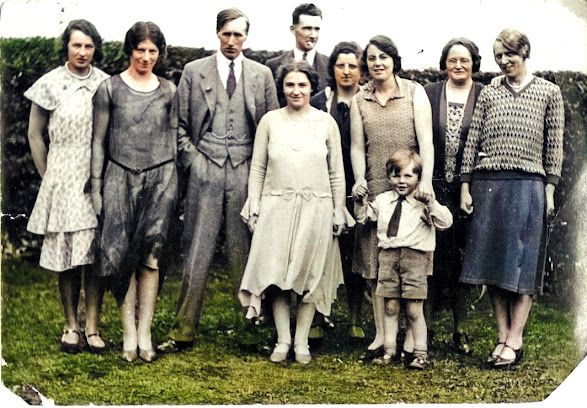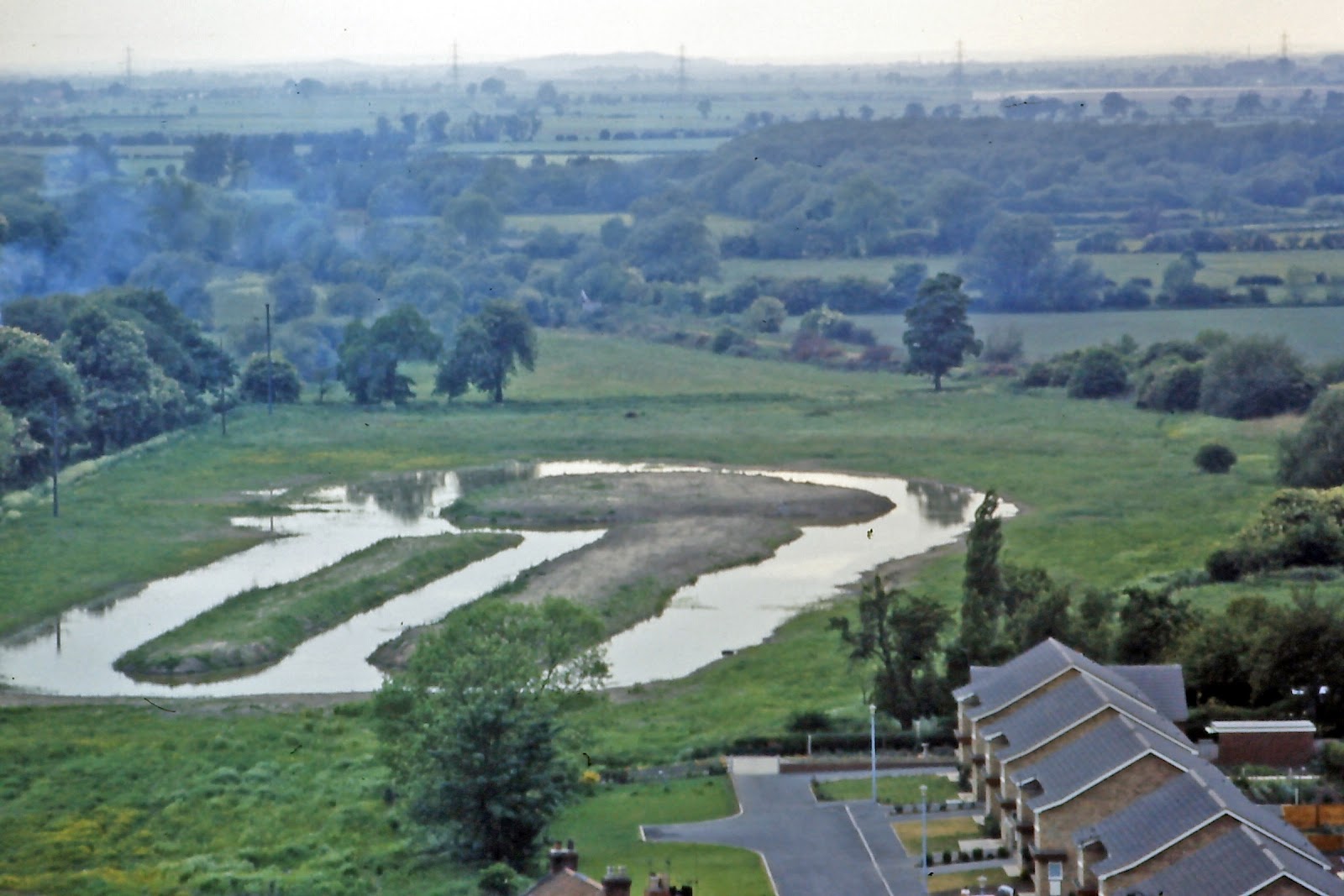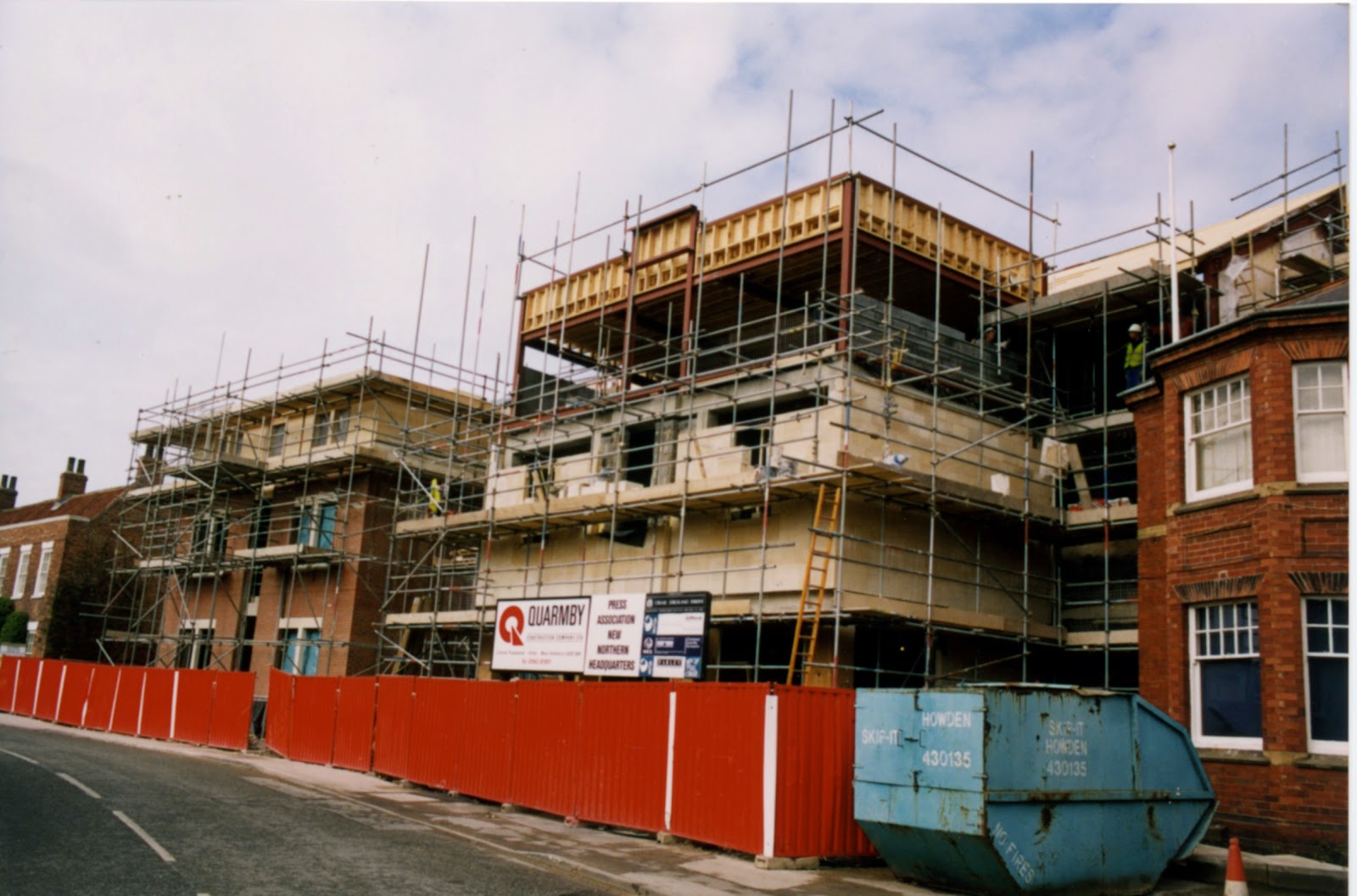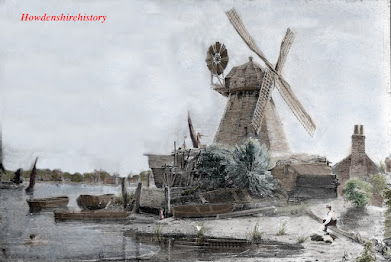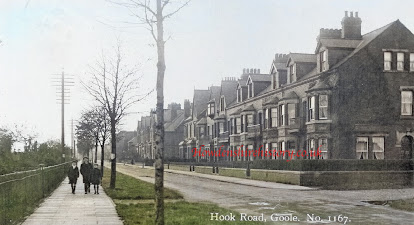I have just had a walk round the garden and not only is everything very dry but it is cold too. Definitely back to wearing a fleece weather. But the forecast promises sunshine this weekend so I live in hope.
On a historical front I seem to have been leaping from topic to topic. Last week I gave a talk to the Snaith and District Men's Association. I have been giving talks to this group for many years and was so pleased to see them again after a long Covid gap. I had put together a new presentation based on the book Puppets in Yorkshire by Walter Wilkinson and which took us on a journey from Thorne to Eastrington in 1930. The descriptions of this rural walk with his puppet theatre Walter wrote evoked a long gone age.
I am also busy updating a presentation on the history of Saltmarshe hall. It includes a longer section on the connections between Anne Lister aka Gentleman Jack and the Rawson family of Halifax. Philip Saltmarshe married Elizabeth Rawson and it was their son who built the present hall, with quite a lot of financial help from his Rawson family.
And finally I have been interested in a couple of queries about old bottles on the All about Goole facebook page. I have long been interested in collecting them and finding out about the stories behind the names
The first query was about a bottle embossed with the name Isaac Fawcett, Goole. I have a Fawcett and Carabine bottle and have managed to find out a little about the firm. I cannot find much about Isaac but in 1891 Thomas Henry Carabine with his family was living in Avenue House, Fourth Avenue and was a rag merchant. He probably built the house and warehouse and certainly later operated the mineral water business from no.1 Fourth Avenue. This is now the premises of Bridal Oasis.
Fawcett and Carabine went bankrupt in 1897 and everything was sold in January 1898. The business seems very well equipped and one wonders whether the Carabines bought the equipment back somehow
The sale included : One Crossley's gas engine 2.h.p., with all fittings complete, and wood casing; soda machine, by Galloway, Bolton ; syphon filler, turnover machine., boiler and chimney, pump and fittings, Robert's patent filter, 2 wash tubs with syringes, pipes, and taps complete; gasometer, corking machine. 3 syrup pans (double cased), 2 good slate tanks and stand, main and other shafting, pulleys, carriages, and wall boxes, water tank to hold 1,704 gallons, bottle syphon and tray, slow combustion stove, syrup jars, syrup barrels, gantries, carboy and frame, 250 gross corks, about 296 Gross Pint, 4-Pint, Screw, Stone and other Bottles, about 1,500 Bottle Cases, 2 dozen syphon cases, 14 gross syphon, about 4 tons broken bottles, oak barrel, guards, armlets, gauntlets, brass. taps, scales and weights, various. essences, weighing machine, 2 mahogany doors., winch, etc.
Also six horses - chestnut mare (Gipsy) 5 years; bay horse (Tinker), 6 years; bay horse Charlie), 7 years; bay horse (Tom); bay mare (Kitty); bay horse (Tender). 2 strong lorries., spring cart, dog cart. pair dray lamps, pair gig lamps, corn bin, water tub, chopper, dray brake, ladder, bench and vice, stool, office chair, wood partition, nest of drawers, 1 set double harness, ditto silver mounted, 3 sets single harness, 2 collars, rope traces, forks, shovels, and stable utensils.
Mrs Ann Carabine took over the licence after the bankruptcy and Carabines continued in business for many years thereafter.
But in 1916 an advert appeared for the business -
Good Mineral Water Business to Let, excellent aerated water plant, artesian well, sanitary factory; good connection; owner called up; immediate possession. Apply Carabine and Co., Goole.
There were three sons, one of whom, John was killed in the war. Thomas Henry died in 1929.
Several other Goole bottles were then pictured on the facebook post. One was an unusual Richard Ward of Aire Street bottle
Richard Ward who died in 1888 at the age of 45 was a wine and spirit merchant, licensed victualler and staunch Conservative. He laid the foundation stone for the new Conservative club in Carlisle street. At his death he was a member of the Goole Board of Guardians, the Goole School Board, and the Goole Burial Board. He was also a director of the Goole and Hull Steam Towing Company, Limited, and was interested in most of the local limited companies. He had only recently married and his widow Jane continued to live in their house in Burlington Crescent.
Another bottle was embossed with the name of John Law and the word Mackintoh [sic]. John/ Jack had the misfortune to be the subject of the first inquest to be held in the Macintosh in 1903 after he died there as a result of a fall.
And many people in the area have Short family bottles. Shorts' business was on the corner of First Avenue/ Pasture Road and was eventually taken over by Littlewoods.
John Short began business in Doyle street as a fish dealer. His son Edwin moved to the newly built premises on Pasture Road around 1887 and combined mineral water manufacturing with selling fruit and game.
An advert in the Goole Times of 1895 reads as follows:
The drink of the season - Edwin Short's non alcoholic dandelion and sarsparilla porter.
April 16 1895. I hereby certify that I have submitted to a searching Chemical Analysis a sample of the Dandelion and Sarsaparilla Porter’ manufactured by EDWIN SHORT Goole and find that it has been, prepared solely from Materials of the highest quality. It has an agreeable and palatable flavour, is entirely free from mawkishneas, is bright and sparkling in appearance, and possesses, in pleasant form, important dietetic, tonic, and restorative properties. This is practically non-alcoholic in character, containing but an infinitesimal proportion of spirit and is absolutely free from anything of an undesirable or extraneous nature.
signed Granville H Sharpe, Analyst, late Principal of Liverpool College of Chemistry.” Manufactured solely by EDWIN SHORT, Red Cross Crated Water Manufacturer.
Edwin Short died in 1899 and his sons Walter and George then ran the business as Short bros.
And I think that there were several other mineral water manufacturers in Goole, as well of course as the North Street brewery.



